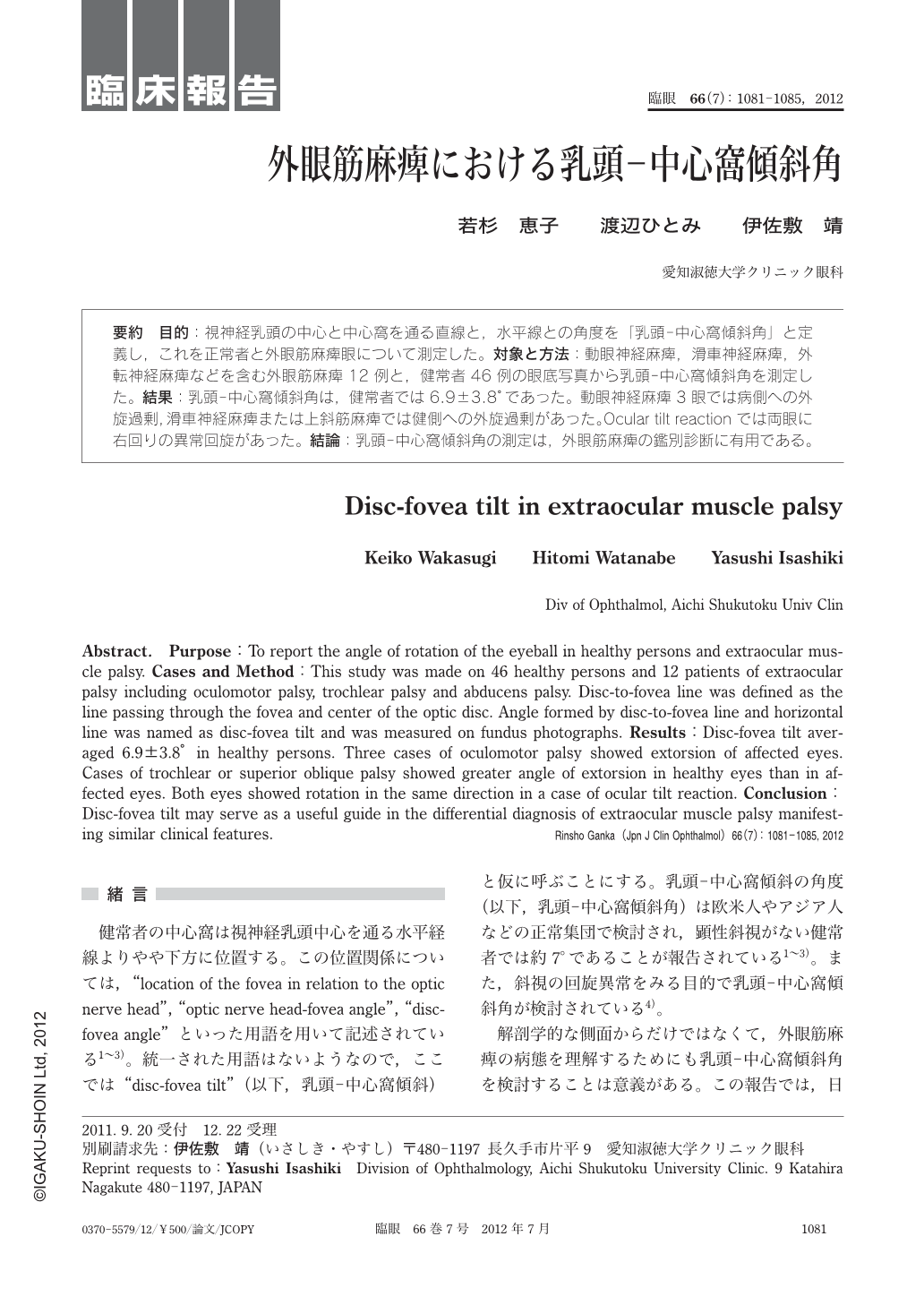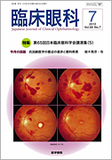Japanese
English
- 有料閲覧
- Abstract 文献概要
- 1ページ目 Look Inside
- 参考文献 Reference
要約 目的:視神経乳頭の中心と中心窩を通る直線と,水平線との角度を「乳頭-中心窩傾斜角」と定義し,これを正常者と外眼筋麻痺眼について測定した。対象と方法:動眼神経麻痺,滑車神経麻痺,外転神経麻痺などを含む外眼筋麻痺12例と,健常者46例の眼底写真から乳頭-中心窩傾斜角を測定した。結果:乳頭-中心窩傾斜角は,健常者では6.9±3.8°であった。動眼神経麻痺3眼では病側への外旋過剰,滑車神経麻痺または上斜筋麻痺では健側への外旋過剰があった。Ocular tilt reactionでは両眼に右回りの異常回旋があった。結論:乳頭-中心窩傾斜角の測定は,外眼筋麻痺の鑑別診断に有用である。
Abstract. Purpose:To report the angle of rotation of the eyeball in healthy persons and extraocular muscle palsy. Cases and Method:This study was made on 46 healthy persons and 12 patients of extraocular palsy including oculomotor palsy,trochlear palsy and abducens palsy. Disc-to-fovea line was defined as the line passing through the fovea and center of the optic disc. Angle formed by disc-to-fovea line and horizontal line was named as disc-fovea tilt and was measured on fundus photographs. Results:Disc-fovea tilt averaged 6.9±3.8°in healthy persons. Three cases of oculomotor palsy showed extorsion of affected eyes. Cases of trochlear or superior oblique palsy showed greater angle of extorsion in healthy eyes than in affected eyes. Both eyes showed rotation in the same direction in a case of ocular tilt reaction. Conclusion:Disc-fovea tilt may serve as a useful guide in the differential diagnosis of extraocular muscle palsy manifesting similar clinical features.

Copyright © 2012, Igaku-Shoin Ltd. All rights reserved.


